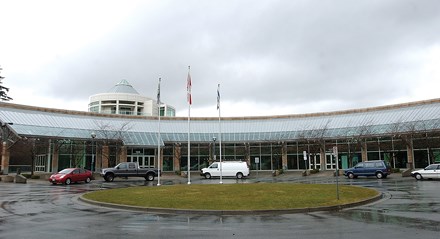The current review of Port Moody’s zoning bylaws to create narrow lots and allow infill housing like laneway homes could be a boon to efforts to preserve the city’s heritage homes.
Mayor Mike Clay said allowing owners of heritage homes, and even homes that are older but not necessarily of heritage value, to subdivide their lots or build laneway homes can be an incentive to preserve the home while still extracting value from their property.
“We’ve got to give people the tools to do this,” said Clay. “We’re really looking for some incentives to get people to preserve heritage.”
In a presentation to city council on Tuesday, senior city planner Alex Taylor proposed a small area of Moody Centre that meets the requirements for the construction of laneway homes, like access to back alleys or streets as well as lots large enough to allow for proper setbacks, be used as a pilot project to test the new zoning regulations. The project would last about six months.
“We would know within a few months how many people would be interested,” said Taylor.
But Clay said the pilot project has been ongoing for the 10 years zoning changes have been discussed, and the area is too small to have much of an impact.
“We’ve been talking about this long enough,” said Clay, who’d like to see the pilot area expanded to the whole city. “The pilot area was so small, it won’t do anything to preserve heritage.”
“Other people in other neighbourhoods are going to want the same opportunities,” said Coun. Diana Dilworth. “Even if we do a blanket rezoning, it won’t mean every property can build a laneway home.”
Some councillors suggested tinkering with the floor area ratio (FAR) of laneway homes to the lot size might be another way to create incentives for owners to preserve their heritage homes.
The city is proposing an FAR of .7 and maximum lot coverage of 45 per cent for laneway homes, but concedes a higher FAR of .8 or .9 might be needed to convince owners to preserve their heritage homes.
“That’s a very high increase and it may not be recommended at this time,” said Taylor.
But Clay said there should be some wiggle room.
“I think we’ve seen great examples of what can be done with FAR to keep the character of neighbourhoods,” said Clay.
He also suggested there might be additional ways to create incentives for homeowners to preserve heritage homes like relaxing parking regulations or waving fees.
“We’ve asked them to come up with more ideas to preserve heritage,” said Clay.
The zoning bylaw amendments, which also include new regulations to prevent the construction of “monster homes” will now be further refined before another draft is presented to council in about a month. There will then be an opportunity for public feedback. Clay said he expects final adoption would occur sometime in the late summer or early fall.



